Welcome to another art dev diary! I’m David Horler, the Art Lead here at Tinto, and I am going to be telling you about all the amazing work that the team has been doing here over the last year or so.
As always, our artists have been working hard creating literally hundreds of new assets, big and small, including the beautiful new Monument illustrations that you saw last week, and dozens of new icons and event pictures for the amazing new mission trees that our Content Designers have showcased over the last few months.
For example, here are the Swedish Scandinavian, Danish, and Commonwealth trees that you have seen in previous diaries, but with all the new icons added.



And here are a couple of my favourite new event images, including this one based on the
1877 painting by Anton von Werner[upload.wikimedia.org], but with the fashions adjusted to look more period-appropriate for EU4, and also our interpretation of “Livonian knights with guns”.

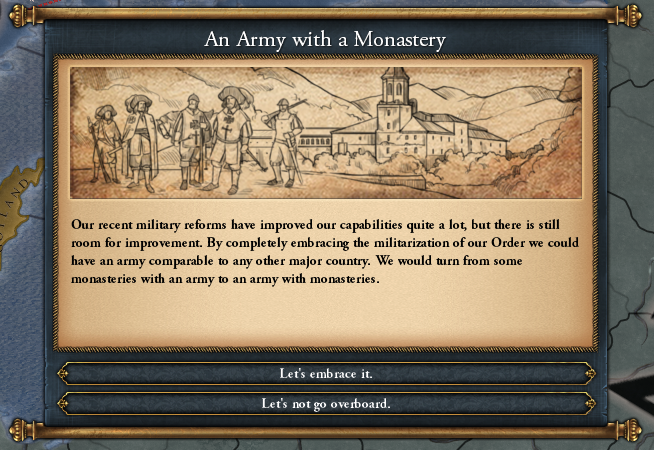
But today I’m going to be focusing on showing you the Scandinavian Unit Pack that comes packaged with the new content pack, and this one has the aim of bringing new visual flair to the regions around the Baltic and North Seas. It was easy to pick the countries featured here, as many in this region have been frequently suggested by fans for a long time.
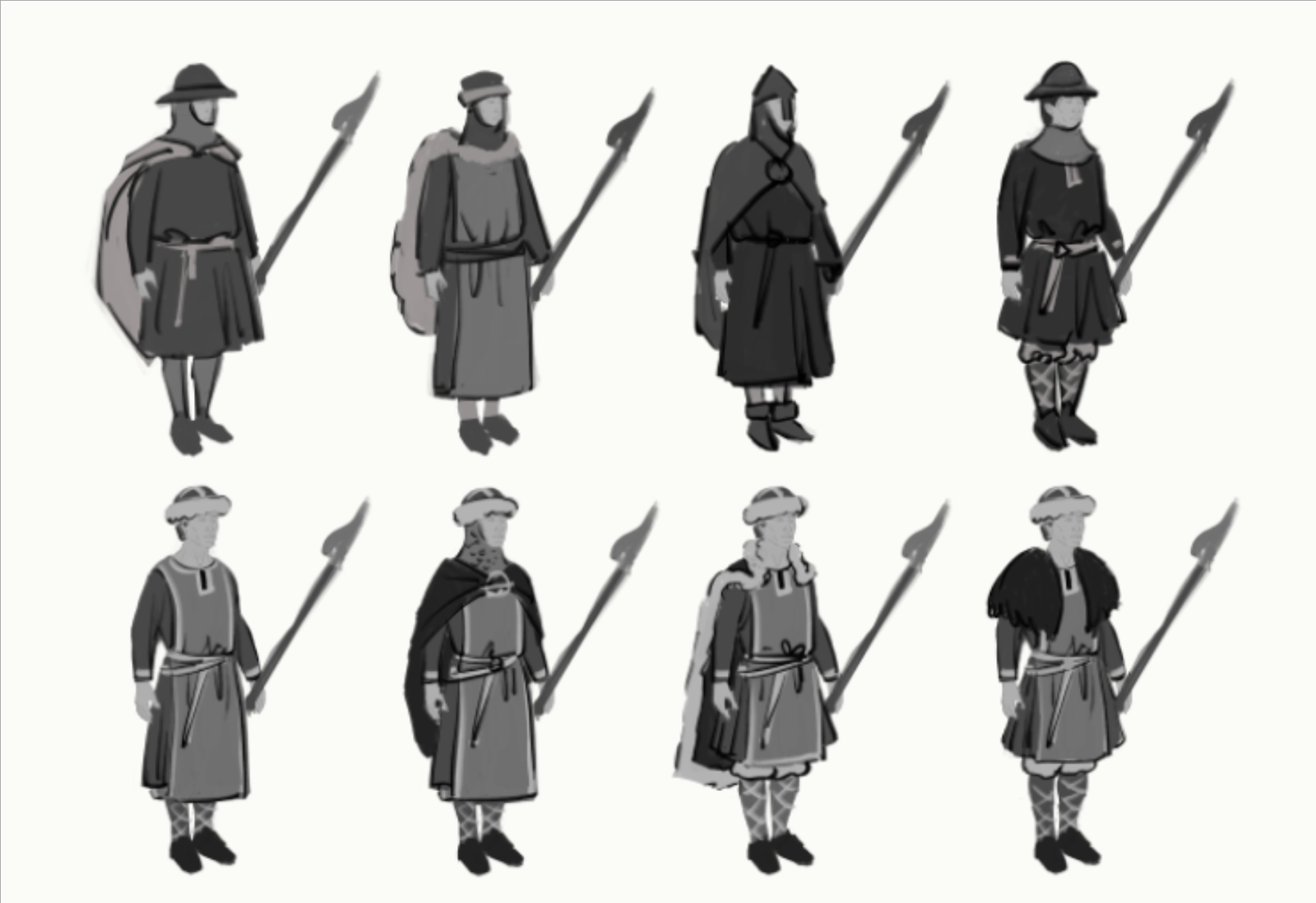
The first concepts are rough thumbnails based on our research, so we can quickly choose a direction based on silhouette and values.We started work on these in December 2021, so it’s incredibly exciting to see our hard work is finally being revealed to fans after working on it so long. With Paradox being a Scandinavian company, but also because we have colleagues here in Tinto with all sorts of connections to Nordic countries, this was a particularly exciting project for us to work on.
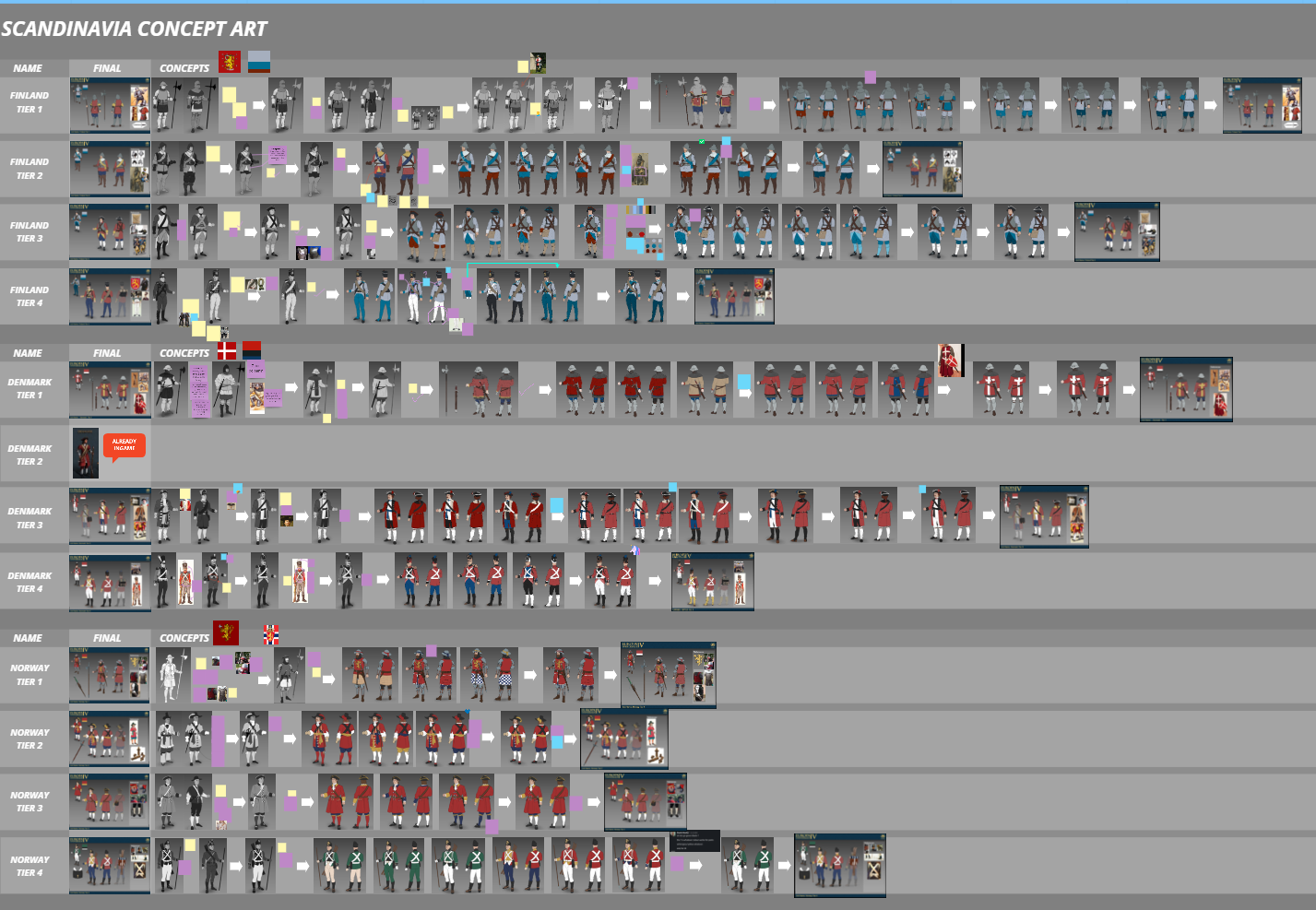 The concept team goes through many iterations to find the right look for each unit.
The concept team goes through many iterations to find the right look for each unit.
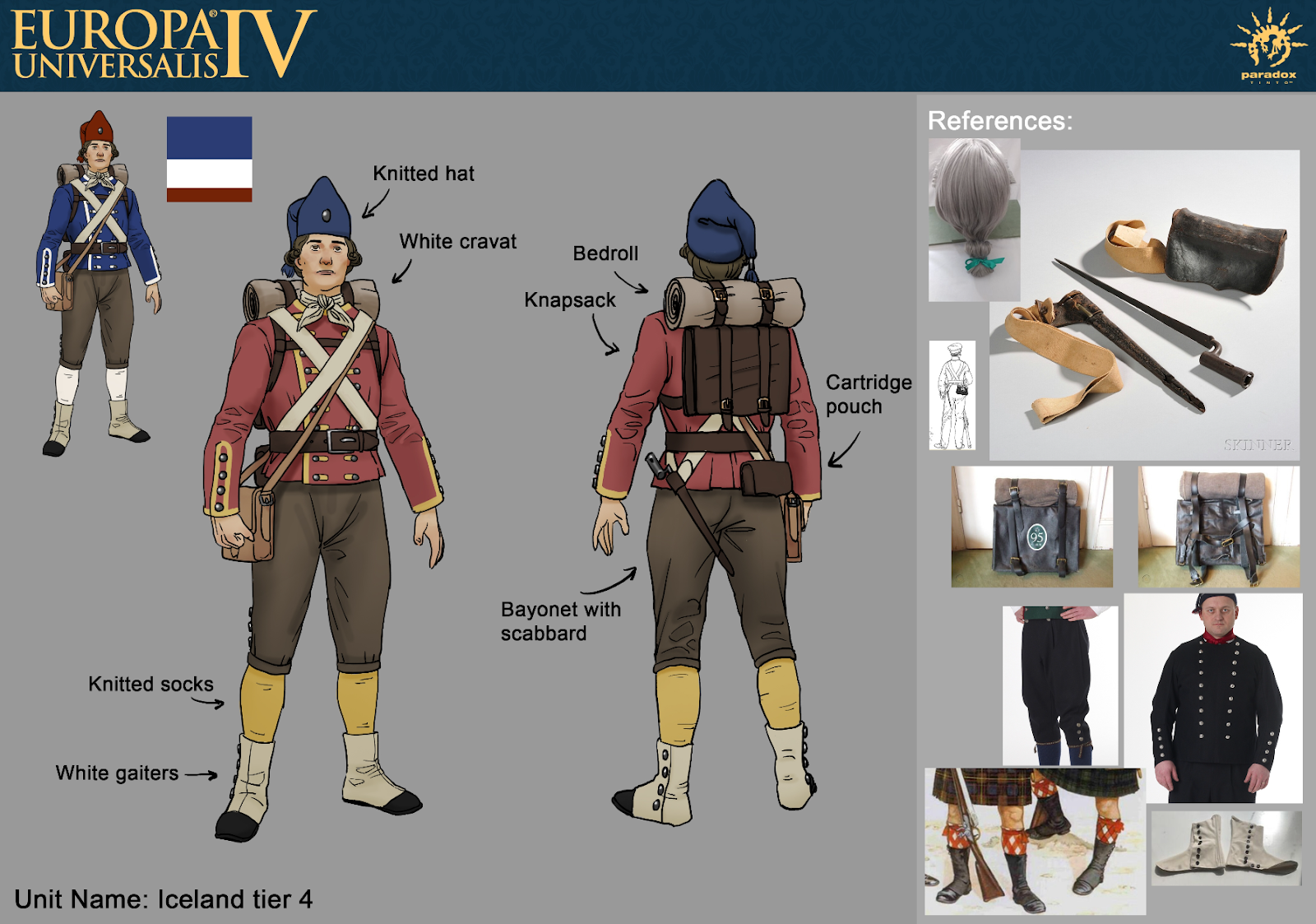
An example of a final concept that is passed to the 3D team.Most of these unit packs are in fact tied to primary culture rather than tag, so you should see them popping up wherever else it makes sense, including retaining them when forming unions like Scandinavia.
Norway The tier 1 wears a coat of plates sporting the Norwegian lion, as well as good arm and leg protection. The red ribbon around the kettle helmet is a nod towards ‘Kongshirden 1260’, a Norwegian re-enactment group who use it as an identifying mark, as one of their members helped us with the research for some of the units in this pack.
Norwegian fashion throughout the middle eras was inspired heavily by that of the Dutch, and you see some of this influence in the uniforms, especially in terms of the coats and the cravat neckties.
The final tier unit is of course based on the elite ski regiments. The intense training performed by these troops consisted of cross-country skiing while firing muskets, and was designed to prepare them for rapid deployment in the harshest wintry environments of Scandinavia. These training exercises eventually developed into the biathlon sport, today competed by countries from around the world in the Winter Olympics.
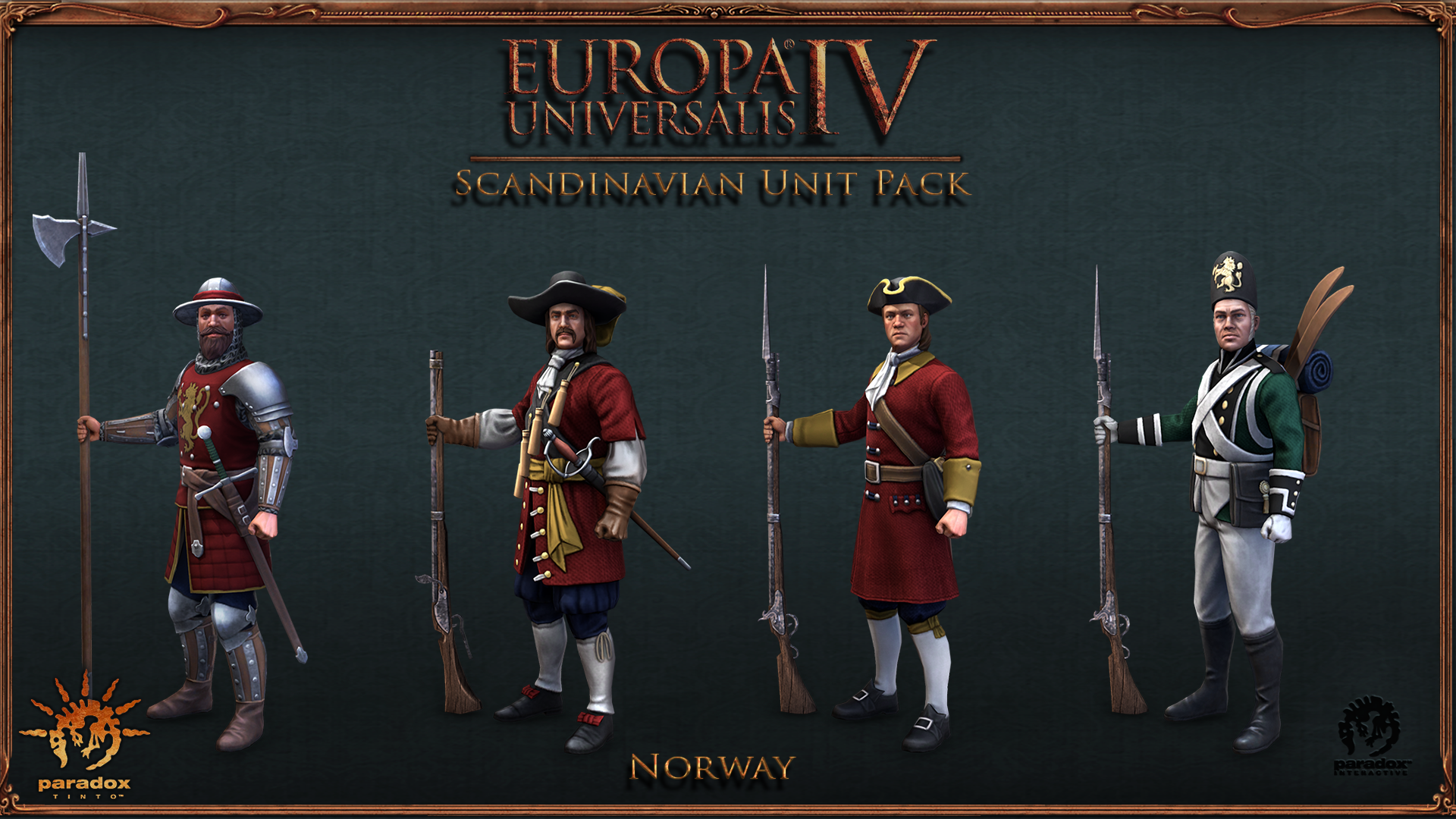
Denmark The Danish receive a partial set, as their Tier 2 is already featured in the
Evangelical Union Unit Pack.
The Danish cross is famously one of the oldest flags still in usage, so we thought it was a cool idea to sew it onto the gambeson of the first tier. We don’t imagine this helmet is great for vision, but they cropped up multiple times in our research and we loved the distinctiveness.
The black facings used on the later tiers were not universal, and they were used by specific Danish regiments, but black is an underutilised facing colour and so we decided to keep them.
During the research stage, we found that many of the references included moustachioed infantrymen, and also our resident Dane character artist Vonboe sports a moustache, so it felt like a very important inclusion.
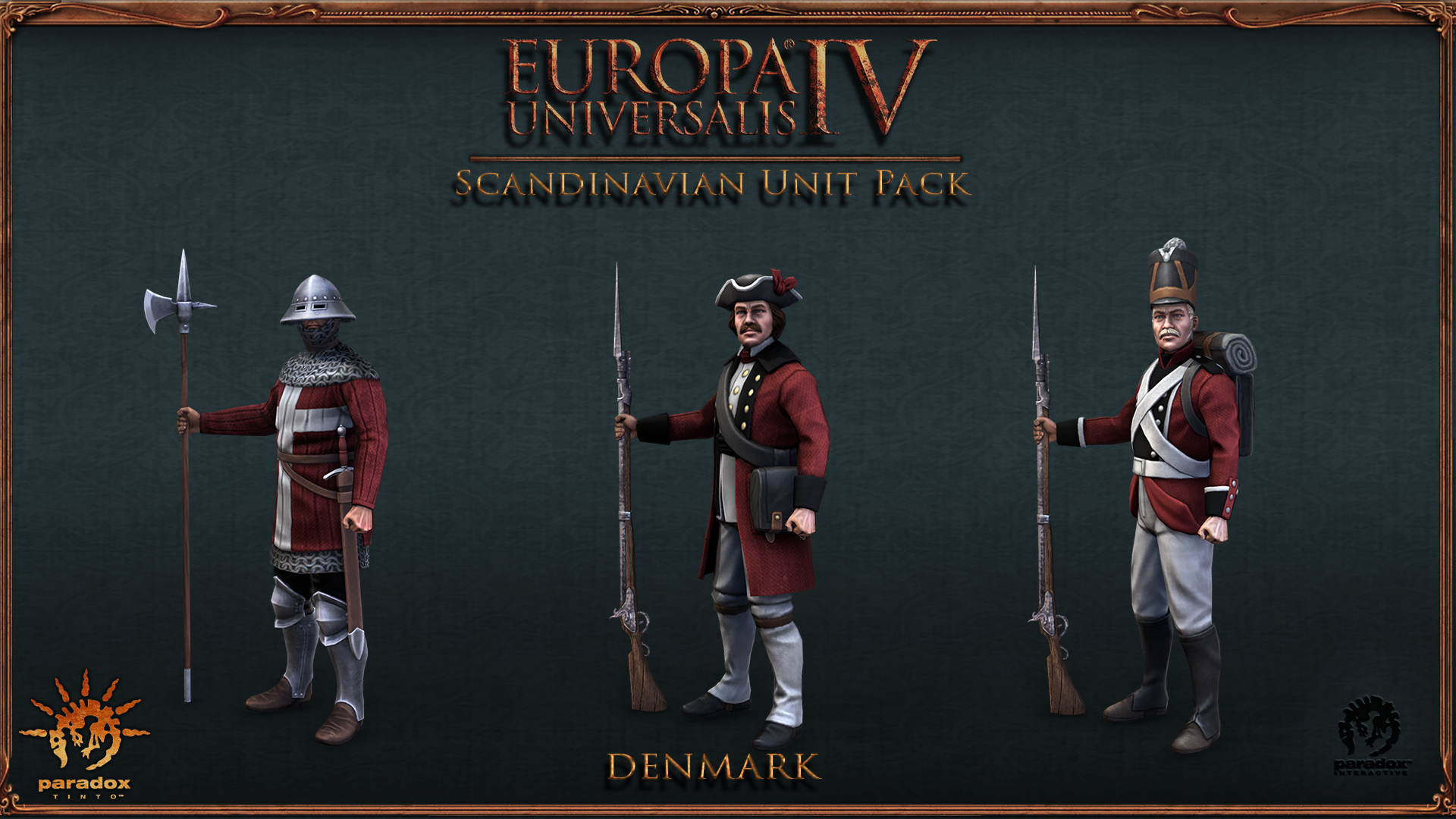
Dithmarschen This small country on the Jutland peninsula is notable for being a peasant republic, and so we examined the way peasants and militias in Frisia and Germany dressed throughout the ages to inspire our designs here. Fans of peasant mobs will be happy with the fact we finally managed to include the trope of pitchforks used as a polearm.
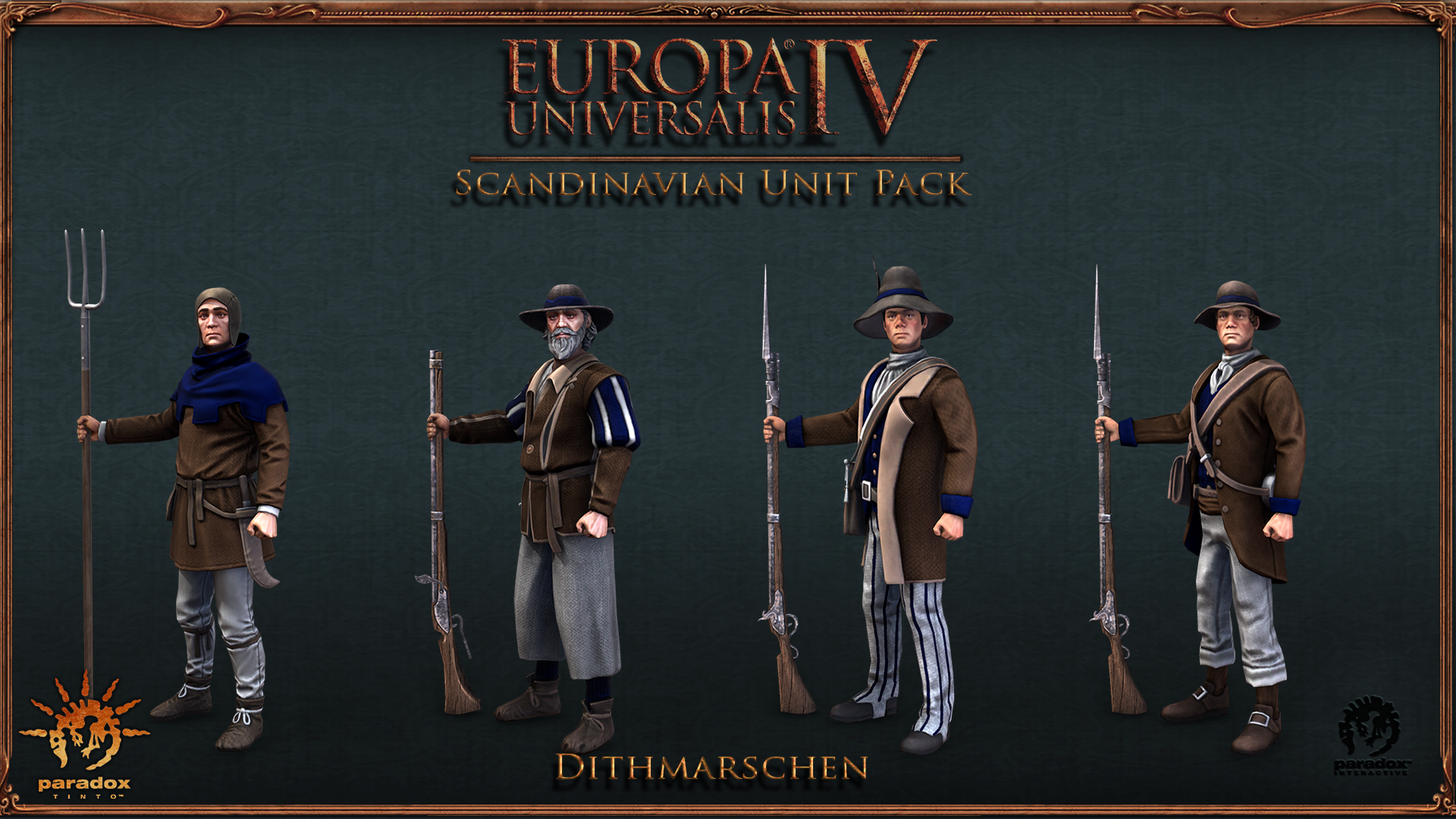
Finland Finland’s native Uralic culture has been influenced through the ages by Sweden, Novgorod, and Russia. Because of this, the Finnish didn't have much opportunity to carve out a military personality of their own - with one main exception.
The iconic appearance of the famous Hakkapeliitta binds together most of these units, from the armoured man-at-arms to the Carolean-era cuirassier. We also used a cartridge pouch made out of näver, a woven birch bark that was a common craft material in the wooded north. The final unit is an infantryman inspired by Russian military kit with a Finnish twist.
The colours of light grey accentuated by blue are inspired by the modern Finnish flag and the military uniforms that Finland developed once it finally became a sovereign country in the 20th Century.

Riga Throughout the eras, we wanted to reflect the wealth and devoutness of Riga, a Hanseatic city in the Baltics settled by German traders and led by the Catholic church.
In terms of later fashion, we drew heavily from the Prussian army but with a twist. The grenadier mitre is reminiscent of the mitre worn by the Archbishop of Riga, and continuing that theme, the glorious feather plume on the shako is also based on German grenadier regiments from a later period.
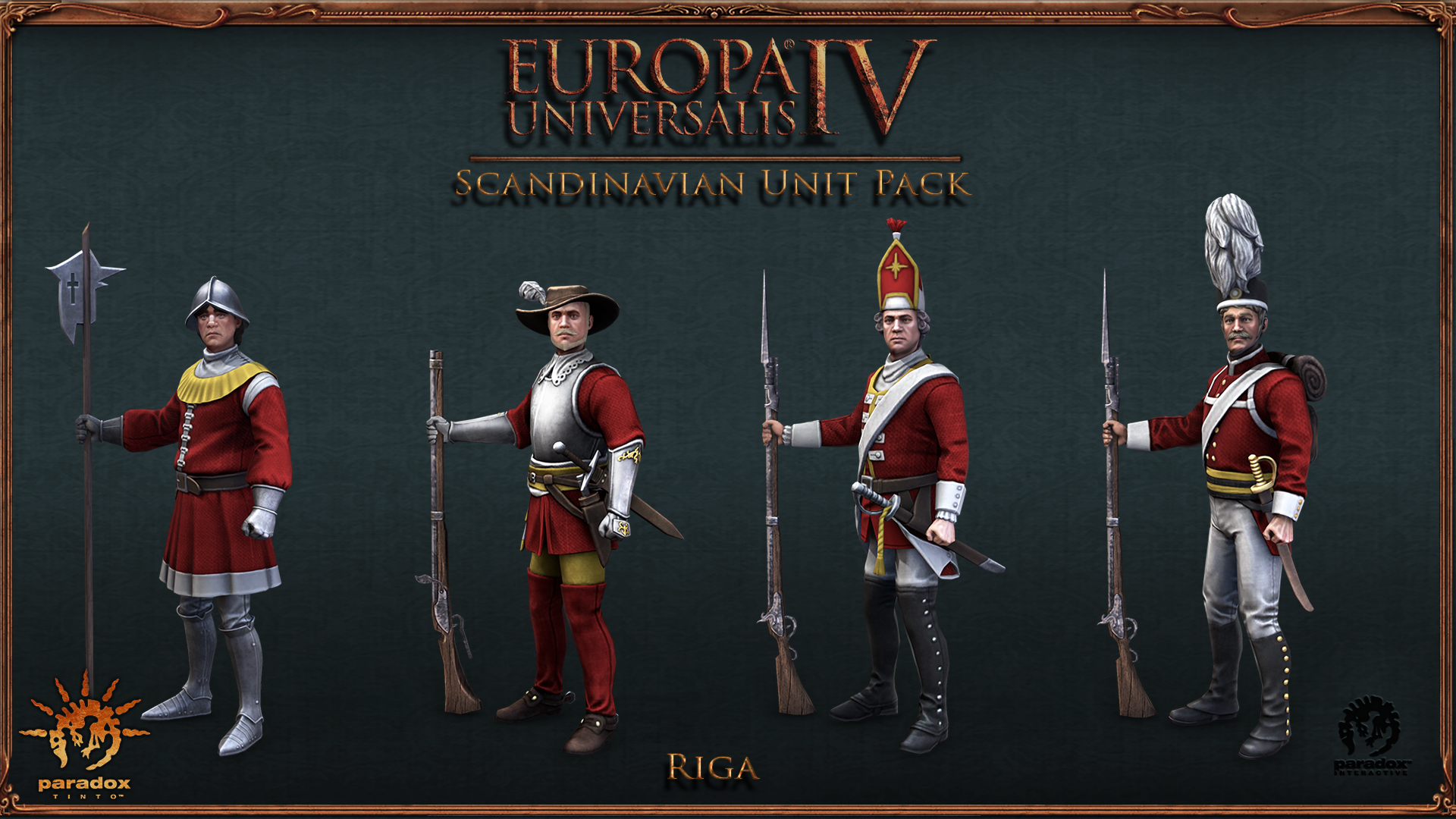
Sápmi The Sámi are perhaps the most visually-striking of these units, with their iconic colourful Gátki tunics and extravagant hats. Their pointy boots (known as nutukas) appear unusual but they are practical; they have wide soles for traversing deep snow, and toe hooks for attaching to skis. Their knives are carved from reindeer antlers in the duodji style.
The reindeer fur mittens and thick leather coats betray the harsh conditions that they endured in the far north of Europe, and their bows and spears both double as ski poles.
We selected hats to be reminiscent of fashion elsewhere in Europe, such as the four-winds hat during the tricorn era, and the peaked cap to resemble a Belgic shako.

Holstein The armoured footman with a sallet is archetypical of Northern Germany in this era, so felt essential to include. Keeping with the armoured theme, the Tier 2 retains the cuirass and other pieces of armour, as the wealthier soldiers sometimes did.
The final era is inspired by troopers of light horse regiments, which gives them a cavalier appearance that we felt was a little underutilised in EU4.
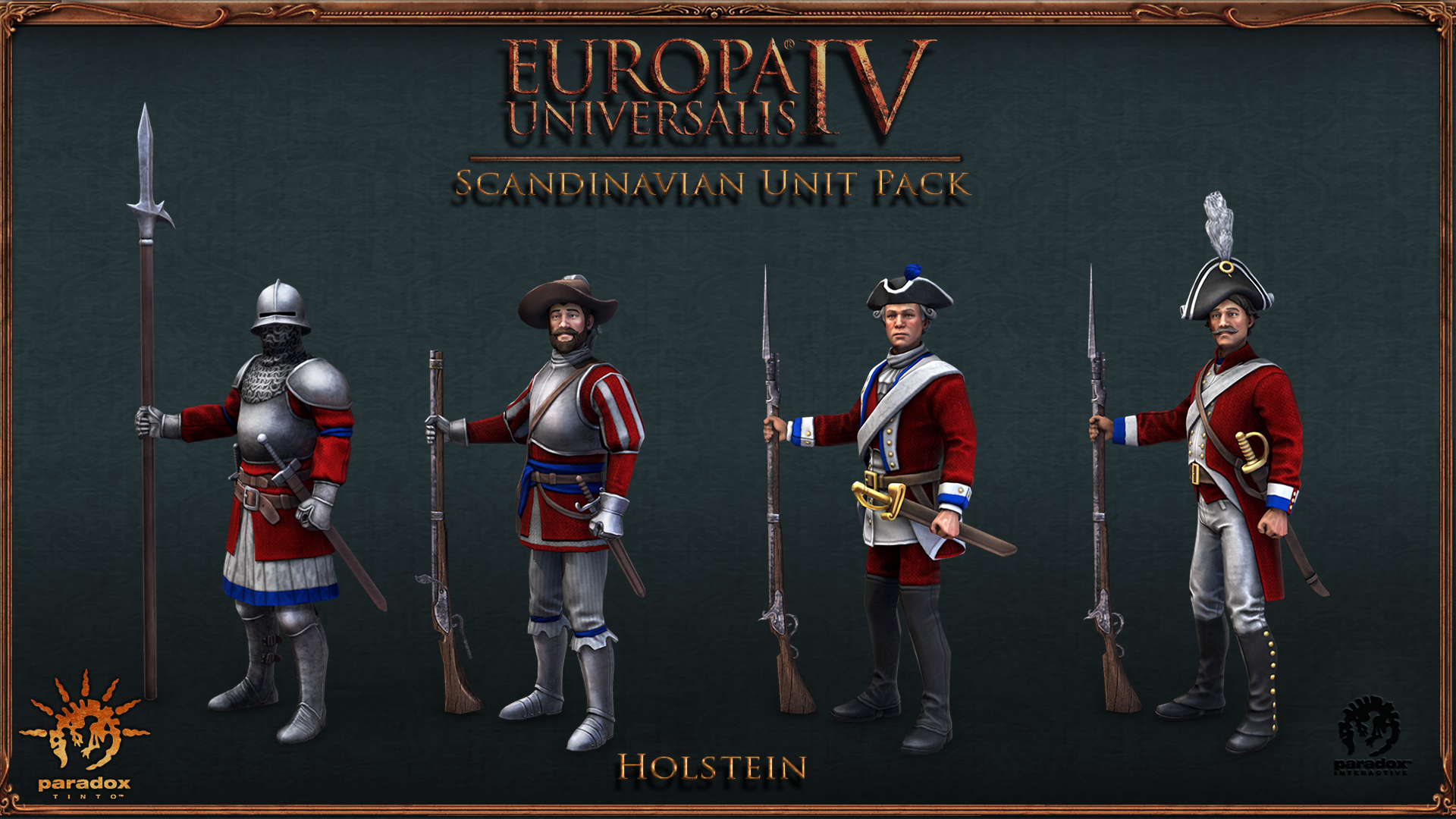
Iceland Another fascinating country without a strong military tradition of their own, we looked for inspiration primarily from contemporary Norwegian styles and the Þjóðbúningur, the modern Icelandic national dress.
In the earliest stages of the game, the metal skullcap, baggy breeches, and handaxes reveal their Norse heritage, and the harpoon spears emphasise their reliance on the ocean.
As they begin to modernise, they follow just a few steps behind the latest fashions in Norway, most notably the almost universal usage of cravats.
Their woolly tail caps (skotthúfur) and closed tunics (treyjur) were necessary protection for the sailors of the windy, northern seas, but also became part of the national costume in the modern era. Furthermore, we drew some inspiration from the rough-and-ready look of North American frontier militias (like Roger’s Rangers), which meshed really well with Iceland's theme of isolated utilitarianism.

Latgalia The releasable nations of the native Baltic cultures share this unit, inspired heavily from Estonian and Latvian traditional clothing.
The heavy woollen greatcoats are reminiscent of the streltsy, but are embroidered with fine details as a central theme of the Baltic visual style. They also have elaborately-woven socks, magnificent hats, and belt sashes which give them a unique look compared to their conquerors and neighbours.
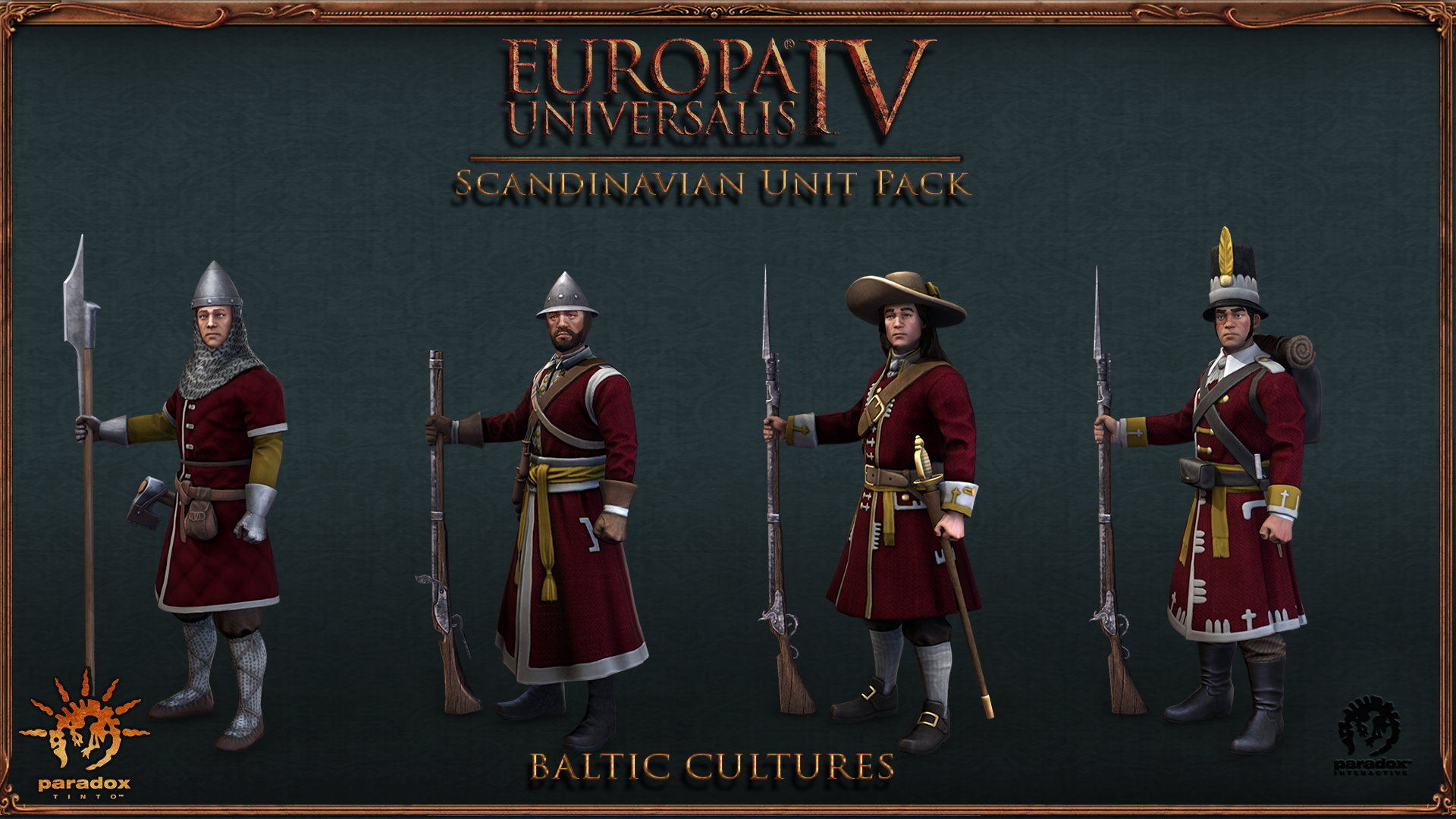
N-iX Game & VR Studio
The EU4 art team has been collaborating with our friends at the Ukrainian studio
N-iX [www.n-ix.com]for several years now, and they have worked on almost everything beautiful in the game, from monument illustrations to event pictures to unit models.
We had already started working with them on the unit pack when the news of the Russian invasion of Ukraine broke. For those of us here in Spain, working with them almost every day, it was a shock. But not nearly as much as it must have been for them, forced to either displace across Europe as refugees, or remain in the uncertainty of their home cities.
Despite these unimaginable challenges, the team continued with determination, and delivered some exceptional work for you. So please spare an extra thought for our Ukrainian colleagues the next time you load up EU4.
Next Dev Diary
Next week PDX Big Boss will bring you an update on the new Achievements and some moddability changes. Until then, let us know in this thread what you think of the units and icons!
















